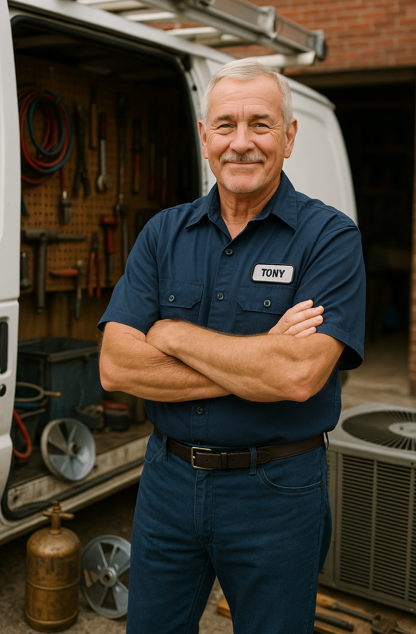👋 Hey homeowners—Tony here.
Let’s skip the fluff. If you’re looking into 80,000 BTU gas furnaces, you’re probably replacing an aging unit, upgrading your HVAC setup, or working on new construction that needs reliable, efficient heat. And if the term R-32 popped up in your search, you might be scratching your head wondering how it fits into a gas furnace setup.
Well, this guide is built for you—the practical, smart homeowner who wants real advice without the runaround. I’ll walk you through everything from proper sizing and R-32’s role to how to get the most bang for your buck.
📏 What an 80,000 BTU Furnace Really Means for Your Home
Let’s start with the basics. BTU stands for British Thermal Units, and 80,000 of them means your furnace can produce that much heat per hour.
🏠 Ideal Coverage
Depending on climate and insulation, an 80,000 BTU furnace will typically heat:
-
1,600–2,000 sq. ft. in colder climates
-
2,000–2,500 sq. ft. in moderate to warm climates
That’s a ballpark. The only way to know for sure is by getting a Manual J Load Calculation from a qualified installer.
➡️ Need a quick ballpark estimate? Try the HVAC.com sizing guide.
❄️ So, Where Does R-32 Come In?
Now here’s where some folks get confused—gas furnaces don’t directly use refrigerant. But if you're installing a matched AC or dual-fuel system, refrigerant compatibility becomes key.
💡 What’s R-32?
R-32 is a newer, more environmentally friendly refrigerant replacing R-410A in a lot of air conditioning and heat pump systems. It’s more efficient, has lower global warming potential, and offers better performance in smaller systems.
R-32 matters if you’re planning to pair your furnace with a compatible A/C or heat pump system. A matched system performs better, runs quieter, and avoids costly retrofits down the line.
Want to dive deeper? ASHRAE’s R-32 profile lays it all out.
⚙️ What to Look for in an 80,000 BTU R-32 Furnace
It’s not just about capacity—you want a furnace that’s smart, efficient, and built to last.
✅ 1. AFUE Rating
AFUE (Annual Fuel Utilization Efficiency) tells you how much of your fuel is converted into heat.
-
80% AFUE = 80% efficiency (standard models)
-
96%+ AFUE = high efficiency with lower operating costs
If you live in a cold climate or run your furnace frequently, going high-efficiency can pay off over time.
Check the ENERGY STAR furnace criteria to compare.
✅ 2. Blower Motor Type
You’ve got options:
-
PSC Motors: Basic, inexpensive
-
ECM Motors: Quieter, more efficient, variable speeds
An ECM motor is the better long-term play, especially in hybrid systems using R-32 A/C or heat pumps.
✅ 3. Single-Stage vs. Two-Stage Burners
-
Single-stage: Full blast or off
-
Two-stage: Adjusts to demand—quieter, more even temps
-
Modulating: High-end, ultra-smooth comfort
💰 Budget vs. Premium: What Are You Paying For?
Let’s break it down:
| Tier | What You Get | Price Range |
|---|---|---|
| Budget | 80% AFUE, PSC blower, single-stage | $1,000–$1,500 |
| Midrange | 96% AFUE, ECM motor, two-stage | $1,500–$2,300 |
| Premium | 96–98% AFUE, variable-speed blower, modulating burner | $2,300–$3,000+ |
The key isn’t price—it’s value. For many homes, a midrange two-stage ECM system gives the best balance of performance and efficiency.
🚫 Common Buying Mistakes (And How to Avoid Them)
I see it every year—people trying to save $300 and ending up with a furnace that costs them thousands in the long run.
❌ Going Too Small (or Too Big)
Undersized units can’t keep up. Oversized ones short cycle and wear out early. You must get a Manual J load calculation.
❌ Ignoring Compatibility
An 80,000 BTU gas furnace may work fine on its own—but if you're planning an R-32 A/C or heat pump later, get a matched system. Otherwise, you’ll spend big fixing mistakes later.
❌ Skimping on Installation
Even the best furnace fails if it’s poorly installed. Make sure your contractor follows industry-standard install practices—like those from ACCA.
🔁 Should You Replace the Whole HVAC System?
If your A/C unit is over 10 years old, don’t just swap out the furnace—consider replacing both together. R-32 systems work best when paired, and you’ll get better performance and fewer headaches.
A new furnace and A/C combo can also qualify you for rebates and incentives. The Energy.gov savings tool is a good place to check for local programs.
✅ Tony’s Quick Checklist Before You Buy
Here’s what I’d tell any homeowner sitting at my workbench:
✔️ Confirm Manual J sizing
✔️ Choose at least 95% AFUE if you heat often
✔️ Match with R-32 compatible AC or heat pump
✔️ Go ECM or variable-speed if you can
✔️ Vet your installer—experience matters
✔️ Look for rebates before you buy
And remember, a furnace is more than a box that makes heat. It’s part of your home’s comfort system. If one part is off, everything suffers.
🔍 Final Word from Tony
Buying the right 80,000 BTU R-32 gas furnace isn’t complicated—if you know what to look for. Size it right, pick solid features, and don’t cheap out on the install.
If you want models that I’d trust in my own house, take a look at The Furnace Outlet’s R-32 Gas Furnace Collection. They stock reliable gear, no gimmicks, and they know how to match systems that actually work.
Need help choosing? Talk to their tech team—they won’t steer you wrong.







